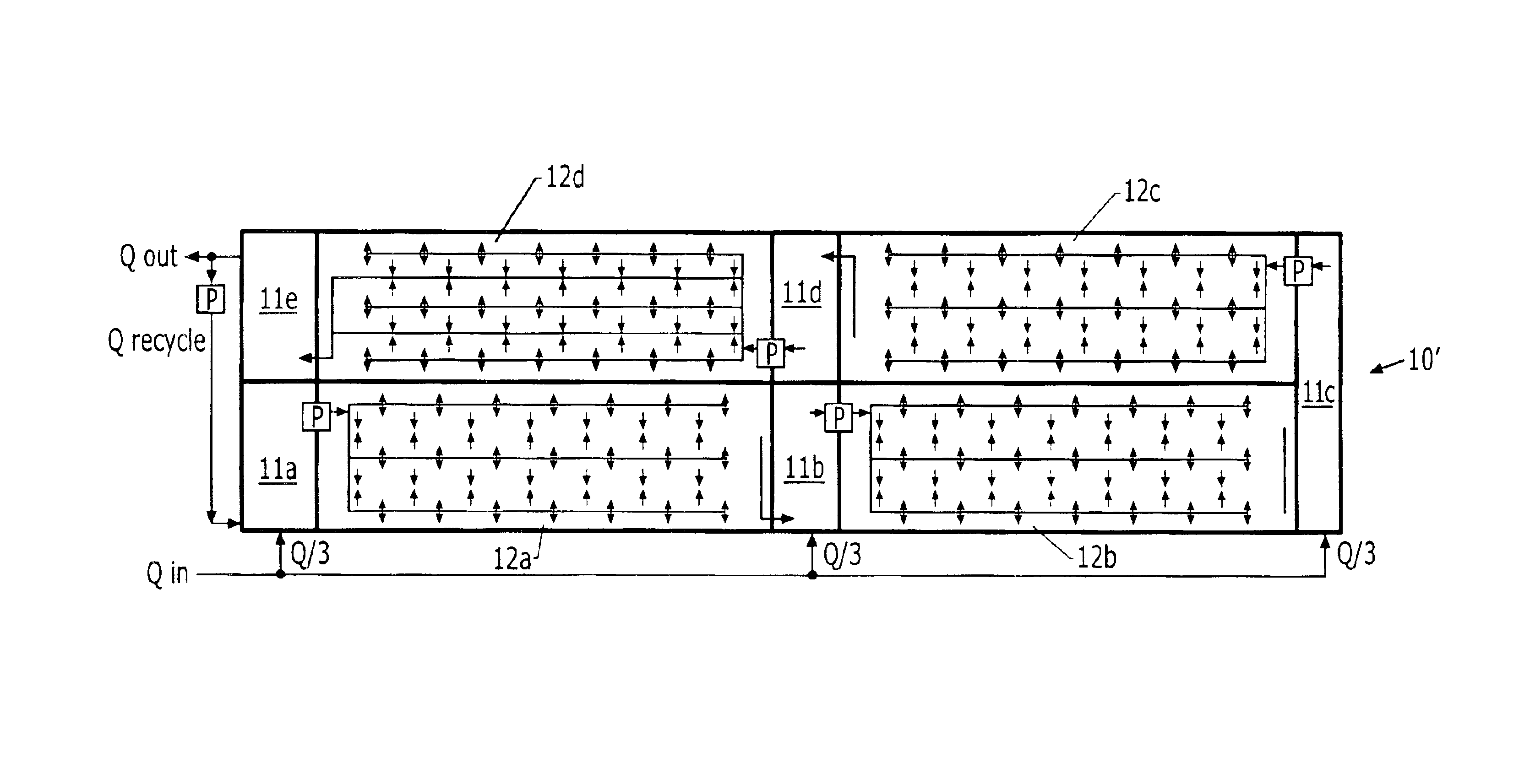Integrated tidal wastewater treatment system and method
a wastewater treatment system and integrated technology, applied in water cleaning, multi-stage water/sewage treatment, separation processes, etc., can solve the problems of low bod/sub>5/sub>, ammonia, and ammonia concentration, and the bod/sub>5/sub> and tss effluent values of sshf wetland cannot be reliably expected to meet tertiary treatment standards
- Summary
- Abstract
- Description
- Claims
- Application Information
AI Technical Summary
Benefits of technology
Problems solved by technology
Method used
Image
Examples
Embodiment Construction
[0039]A description of the preferred embodiments of the present invention will now be presented with reference to FIGS. 1-6.
[0040]The integrated TVFM treatment system 10 in a particular embodiment comprises an alternating series of lagoons 11 and VF marsh cells 12. Each lagoon 11 (FIG. 1) comprises a basin 13 that has an inlet 14 for receiving wastewater to be treated and an outlet 321 from which treated wastewater exits. The basin 13 has a depth 15 extending from a top 16 to a bottom 17. The lagoon 11 comprises a rack 18 that can float upon a surface of the water 90 in the basin 13, the rack 18 adapted to support wetland plants 19 thereon so that the plant's roots 20 extend beneath the rack 18 and the leaves and stalks 21 extend above the rack 18.
[0041]Each lagoon 11 is adapted to maintain a population of grazing aquatic invertebrates, such as, for example, filter-feeding zooplankton.
[0042]Each marsh cell 12 (FIG. 2) in a particular embodiment comprises a basin 22 that has a hole, ...
PUM
| Property | Measurement | Unit |
|---|---|---|
| Fraction | aaaaa | aaaaa |
| Fraction | aaaaa | aaaaa |
| Time | aaaaa | aaaaa |
Abstract
Description
Claims
Application Information
 Login to View More
Login to View More - R&D
- Intellectual Property
- Life Sciences
- Materials
- Tech Scout
- Unparalleled Data Quality
- Higher Quality Content
- 60% Fewer Hallucinations
Browse by: Latest US Patents, China's latest patents, Technical Efficacy Thesaurus, Application Domain, Technology Topic, Popular Technical Reports.
© 2025 PatSnap. All rights reserved.Legal|Privacy policy|Modern Slavery Act Transparency Statement|Sitemap|About US| Contact US: help@patsnap.com



